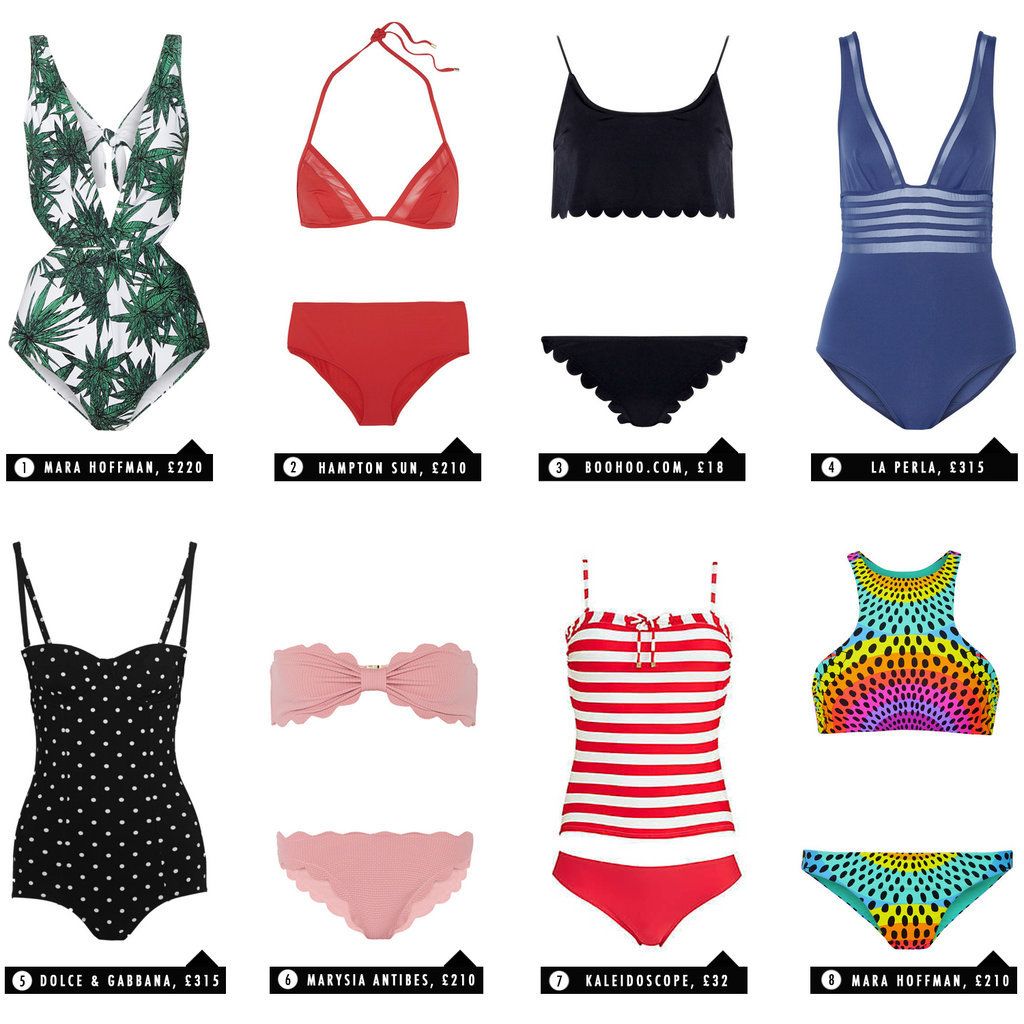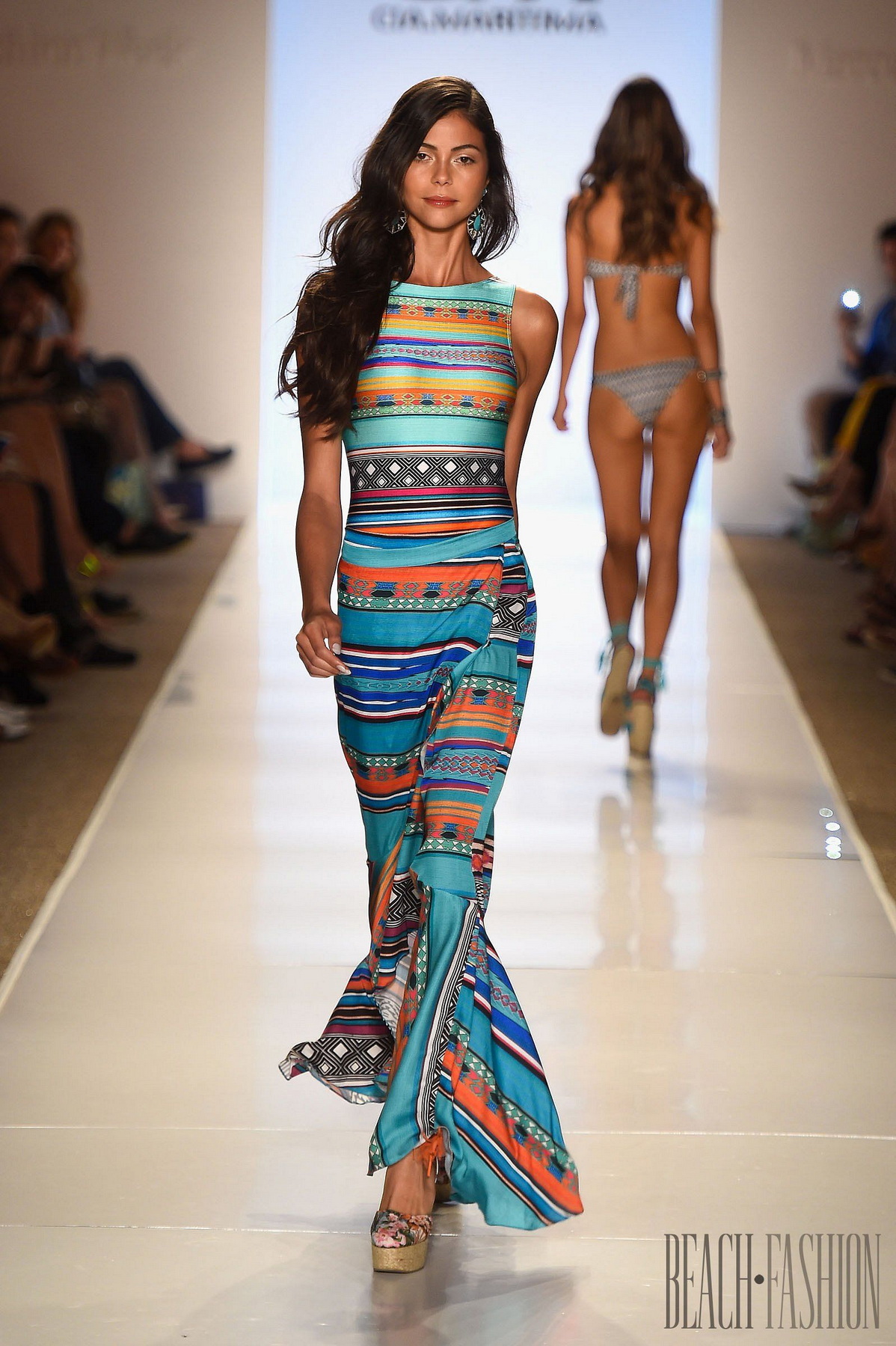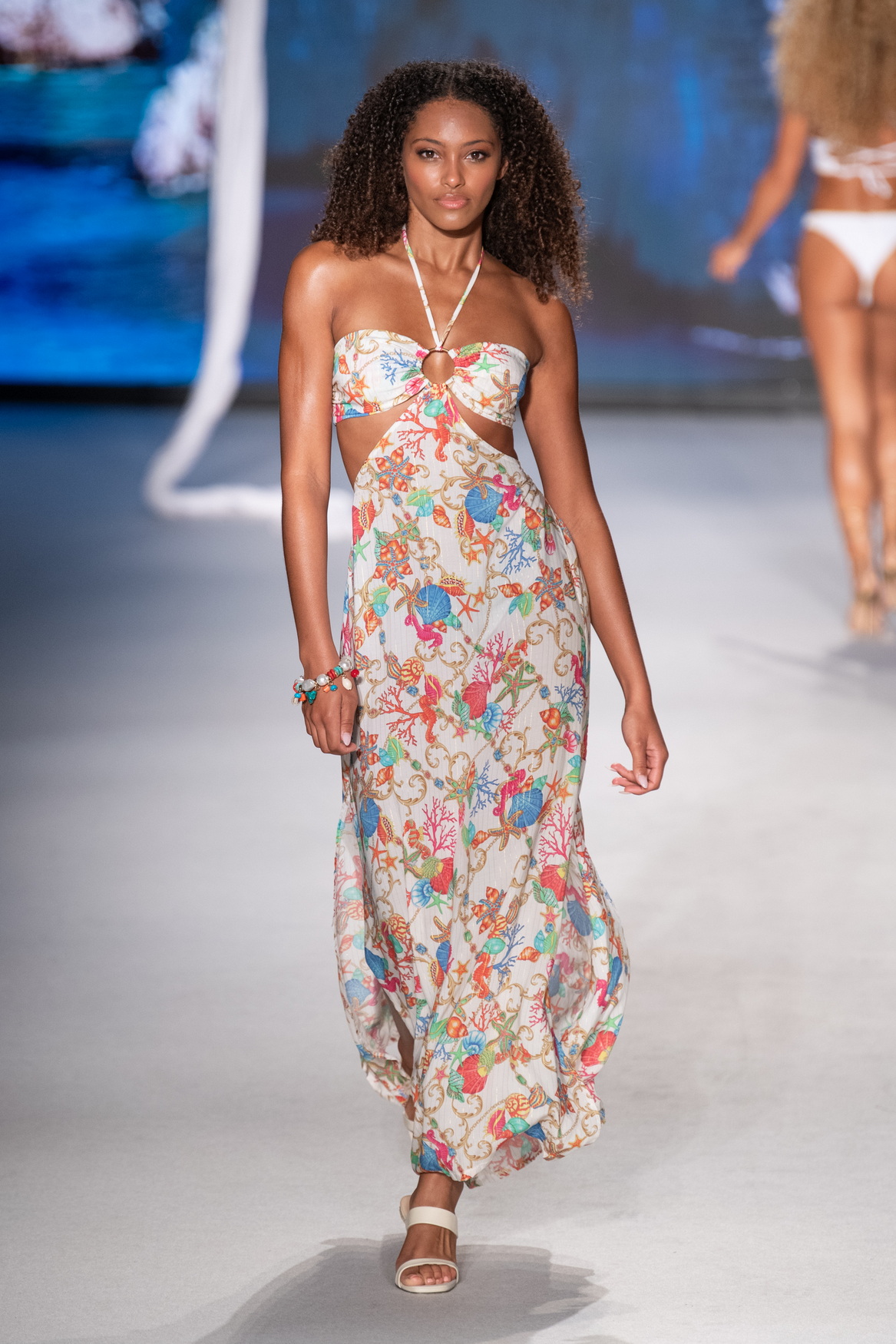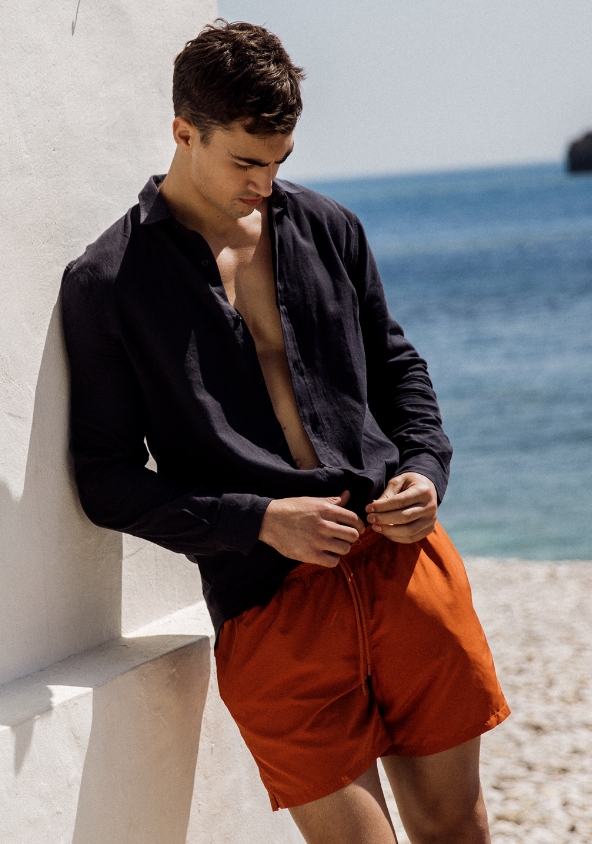Content Menu
● The Essence of a Swimwear Collection
● Factors Influencing Collection Size
● Typical Collection Sizes
● Anatomy of a Swimwear Collection
● The Creative Process
● The Importance of Diversity in Collections
● Sustainability in Swimwear Collections
● The Role of Technology in Swimwear Design
● The Impact of Fashion Shows on Collection Size
● Marketing and Consumer Behavior
● The Future of Swimwear Collections
● Conclusion
● Frequently Asked Questions
>> 1. Q: What is the average number of pieces in a swimwear collection?
>> 2. Q: How often do swimwear brands release new collections?
>> 3. Q: Are sustainable swimwear collections typically smaller?
>> 4. Q: How do designers decide how many pieces to include in a collection?
>> 5. Q: Do luxury swimwear brands typically have larger collections?
When the sun's rays begin to warm the earth and the allure of beaches and pools becomes irresistible, fashion enthusiasts and water lovers alike turn their attention to the latest swimwear collections. But have you ever wondered just how many pieces make up a typical swimwear collection? This question, while seemingly simple, opens up a fascinating exploration into the world of fashion design, market trends, and consumer preferences in the ever-evolving swimwear industry.
The Essence of a Swimwear Collection
A swimwear collection is more than just a random assortment of bathing suits. It's a carefully curated selection of pieces that reflect a designer's vision, cater to various body types, and anticipate the desires of fashion-conscious consumers. From sleek one-pieces to daring bikinis, each item in a collection serves a purpose and contributes to the overall story the designer wishes to tell.

Factors Influencing Collection Size
The number of pieces in a swimwear collection can vary widely depending on several factors:
1. Brand Size and Resources: Larger, established brands often have the capacity to produce more extensive collections compared to smaller, boutique labels.
2. Target Market: Collections aimed at a broader audience may include more pieces to cater to diverse tastes and body types.
3. Seasonality: Some brands release multiple collections per year, while others focus on a single, comprehensive seasonal offering.
4. Design Philosophy: Minimalist brands might opt for fewer, versatile pieces, while those embracing maximalism could present a wider array of styles.
5. Market Trends: The current fashion landscape and consumer demands can influence the size and composition of a collection.
6. Production Capabilities: Manufacturing constraints and supply chain considerations can impact the number of pieces a brand can realistically produce.
Typical Collection Sizes
While there's no one-size-fits-all answer to how many pieces constitute a swimwear collection, industry observations provide some insights:
Small to Medium Collections: Emerging designers or niche brands might release collections with 10 to 30 pieces. These collections often focus on a specific theme or style, allowing the brand to establish its identity in the market.
Medium to Large Collections: More established brands typically offer collections ranging from 30 to 100 pieces. This size allows for a diverse range of styles, colors, and patterns while maintaining a cohesive brand aesthetic.
Extensive Collections: Major fashion houses and swimwear-specific brands might present collections exceeding 100 pieces. These expansive lines often include a wide variety of styles, from basic essentials to avant-garde designs, catering to a broad spectrum of consumers.

Anatomy of a Swimwear Collection
To better understand the composition of a swimwear collection, let's break down the typical elements:
1. One-Piece Swimsuits: Classic and versatile, one-pieces are a staple in any collection. Designers often offer variations in cuts, necklines, and back styles to suit different preferences.
2. Bikinis: The quintessential beach attire, bikinis come in various styles such as triangle tops, bandeau, halter, and more. A collection might include multiple top and bottom combinations.
3. Tankinis: Combining the coverage of a tank top with the flexibility of a two-piece, tankinis are popular among those seeking a balance between modesty and style.
4. Cover-Ups: From breezy kaftans to chic sarongs, cover-ups are essential components of a well-rounded swimwear collection.
5. Men's Swim Shorts: For brands that cater to both genders, a selection of men's swim shorts in different lengths and patterns is common.
6. Accessories: Many collections include complementary accessories like beach bags, hats, and sandals to create complete looks.
7. Performance Swimwear: Some collections incorporate athletic-inspired pieces designed for water sports and active beach-goers.
8. Plus-Size Options: Inclusive collections often feature extended size ranges to cater to diverse body types.
9. Children's Swimwear: Brands targeting families might include a selection of children's swimwear coordinating with adult styles.
10. Sustainable Pieces: With growing environmental awareness, many collections now include swimwear made from recycled materials or eco-friendly fabrics.
The Creative Process
Designing a swimwear collection is a meticulous process that begins long before the pieces hit the runway or store shelves. Designers typically start by researching current trends, analyzing market demands, and drawing inspiration from various sources such as art, nature, and cultural influences.
Once the initial concepts are developed, designers create sketches and prototypes, experimenting with different fabrics, cuts, and embellishments. This phase often involves multiple iterations as designs are refined and perfected.
Color palettes play a crucial role in defining the collection's mood and appeal. Designers carefully select hues that not only look attractive but also complement a range of skin tones and withstand exposure to sun, salt, and chlorine.

The Importance of Diversity in Collections
Modern swimwear collections are increasingly focusing on diversity and inclusivity. This means not only offering a wide range of sizes but also designing pieces that cater to different body shapes, skin tones, and personal styles. A truly comprehensive collection might include:
- High-waisted bottoms for those preferring more coverage
- Supportive tops for larger bust sizes
- Adaptive swimwear for individuals with disabilities
- Modest options for those seeking more coverage due to personal or religious reasons
- Gender-neutral designs that appeal to a broad spectrum of consumers
By embracing diversity, swimwear collections can reach a wider audience and promote body positivity within the fashion industry.
Sustainability in Swimwear Collections
As environmental concerns continue to shape consumer preferences, many swimwear brands are incorporating sustainability into their collections. This trend is reflected in:
1. Eco-friendly Materials: Using recycled nylon, polyester made from plastic bottles, and organic cotton for cover-ups.
2. Reduced Waste: Implementing zero-waste pattern cutting techniques and minimizing packaging.
3. Durability: Creating high-quality pieces that last longer, reducing the need for frequent replacements.
4. Ethical Production: Ensuring fair labor practices and transparent supply chains.
5. Circular Fashion: Offering recycling programs for old swimwear or designing pieces that can be easily recycled at the end of their lifecycle.
These sustainable practices not only appeal to environmentally conscious consumers but also contribute to the overall value and uniqueness of a swimwear collection.
The Role of Technology in Swimwear Design
Advancements in technology are revolutionizing the way swimwear collections are designed and produced. Some innovative approaches include:
1. 3D Modeling: Allowing designers to visualize and adjust designs before creating physical samples, reducing waste and speeding up the design process.
2. Digital Printing: Enabling intricate patterns and photorealistic prints that were previously difficult to achieve.
3. Smart Fabrics: Incorporating UV protection, quick-drying properties, and even technology that changes color or pattern when exposed to water.
4. Virtual Fitting Rooms: Using augmented reality to help customers try on swimwear virtually, potentially reducing returns and improving customer satisfaction.
5. AI-Driven Trend Forecasting: Utilizing artificial intelligence to predict upcoming trends and consumer preferences, helping brands create more targeted collections.
These technological advancements are not only enhancing the design and functionality of swimwear but also influencing the number and types of pieces included in collections.

The Impact of Fashion Shows on Collection Size
Fashion shows play a significant role in shaping swimwear collections and often influence their size. These events serve as a platform for designers to showcase their most innovative and eye-catching pieces, sometimes leading to expanded collections that include both runway-ready designs and more wearable, commercial versions.
Let's take a closer look at how fashion shows impact swimwear collections through some video examples:
1. Divaska Swimwear Fashion Show - Miami Swim Week 2023
This video showcases a diverse range of swimwear pieces, highlighting how a single collection can encompass various styles, from bold prints to minimalist designs. The runway presentation allows designers to display the versatility of their collection, often leading to a larger number of pieces to cater to different tastes and body types.
2. House of Ladera Swimwear Fashion Show - Miami Swim Week
This show demonstrates how designers often include complementary pieces like cover-ups and accessories in their collections, expanding the total number of items. The presentation also illustrates how color coordination and thematic consistency can tie a larger collection together.
3. Vasaro Swimwear Fashion Show - Miami Swim Week 2023
This extended runway presentation showcases the breadth of a comprehensive swimwear collection. From one-pieces to bikinis, and from solid colors to intricate patterns, the video illustrates how a single collection can include dozens of unique pieces to create a cohesive yet diverse lineup.
These fashion shows not only influence the size of collections but also play a crucial role in setting trends, generating buzz, and providing valuable feedback that designers can use to refine their offerings before they hit the market.
Marketing and Consumer Behavior
The size and composition of swimwear collections are also influenced by marketing strategies and consumer behavior. Brands must strike a balance between offering enough variety to attract a wide range of customers and maintaining a focused, cohesive brand identity.
Some key considerations include:
1. Limited Edition Pieces: Creating a sense of exclusivity by including a few limited-run items in a collection.
2. Capsule Collections: Releasing smaller, focused collections throughout the season to maintain customer interest and respond to emerging trends.
3. Collaborations: Partnering with celebrities, influencers, or other brands to create unique pieces that expand the collection and attract new customers.
4. Customization Options: Offering mix-and-match separates or customizable elements, effectively expanding the collection's versatility without necessarily increasing the number of distinct pieces.
5. Social Media Influence: Designing Instagram-worthy pieces that encourage social sharing and viral marketing.

The Future of Swimwear Collections
As we look to the future, several trends are likely to shape the size and nature of swimwear collections:
1. Personalization: Advanced manufacturing techniques may allow for more customized swimwear, potentially leading to smaller, more targeted collections.
2. Sustainability: The push for eco-friendly fashion could result in more focused collections with versatile, long-lasting pieces.
3. Tech Integration: As wearable technology advances, we may see swimwear collections that incorporate smart fabrics and digital features.
4. Virtual Collections: With the rise of digital fashion, some brands might create virtual swimwear collections for use in digital environments, expanding the concept of what a collection can be.
5. Climate Adaptation: As climate patterns shift, swimwear collections may evolve to include more protective elements or adapt to changing seasonal demands.
Conclusion
The question "How many pieces in a swimwear collection?" doesn't have a single, definitive answer. Collections can range from a handful of carefully curated pieces to extensive lines with hundreds of options. The size and composition of a swimwear collection depend on a complex interplay of factors including brand identity, market demands, production capabilities, and creative vision.
What remains constant is the goal of creating a collection that resonates with consumers, reflects current trends, and pushes the boundaries of design and functionality. Whether it's a boutique label offering a select few statement pieces or a global brand presenting a comprehensive range of styles, each swimwear collection tells a unique story and invites wearers to express themselves through fashion.
As we've explored, the world of swimwear is dynamic and ever-evolving. From sustainable practices to technological innovations, from runway spectacles to personalized shopping experiences, the factors influencing swimwear collections are as varied as the styles themselves. So the next time you browse a swimwear collection, take a moment to appreciate the creativity, strategy, and craftsmanship that goes into each and every piece.
Frequently Asked Questions
1. Q: What is the average number of pieces in a swimwear collection?
A: While there's no strict average, most medium-sized brands typically offer collections ranging from 30 to 100 pieces. However, this can vary greatly depending on the brand's size, target market, and design philosophy.
2. Q: How often do swimwear brands release new collections?
A: Many brands release collections seasonally, with major launches for summer and resort wear. Some larger brands may have multiple releases throughout the year, including capsule collections or limited-edition lines.
3. Q: Are sustainable swimwear collections typically smaller?
A: Sustainable collections can vary in size, but some brands choose to create smaller, more focused collections to minimize waste and emphasize quality over quantity. However, as sustainable practices become more mainstream, eco-friendly collections are increasingly matching the size of traditional ones.
4. Q: How do designers decide how many pieces to include in a collection?
A: Designers consider various factors such as market demand, production capabilities, brand identity, and target audience. They also analyze sales data from previous collections and current fashion trends to determine the optimal size and composition of their new collection.
5. Q: Do luxury swimwear brands typically have larger collections?
A: Not necessarily. While some luxury brands may offer extensive collections, others focus on exclusivity with smaller, highly curated lines. The size of a luxury collection often depends more on the brand's specific strategy and positioning rather than its price point.






































